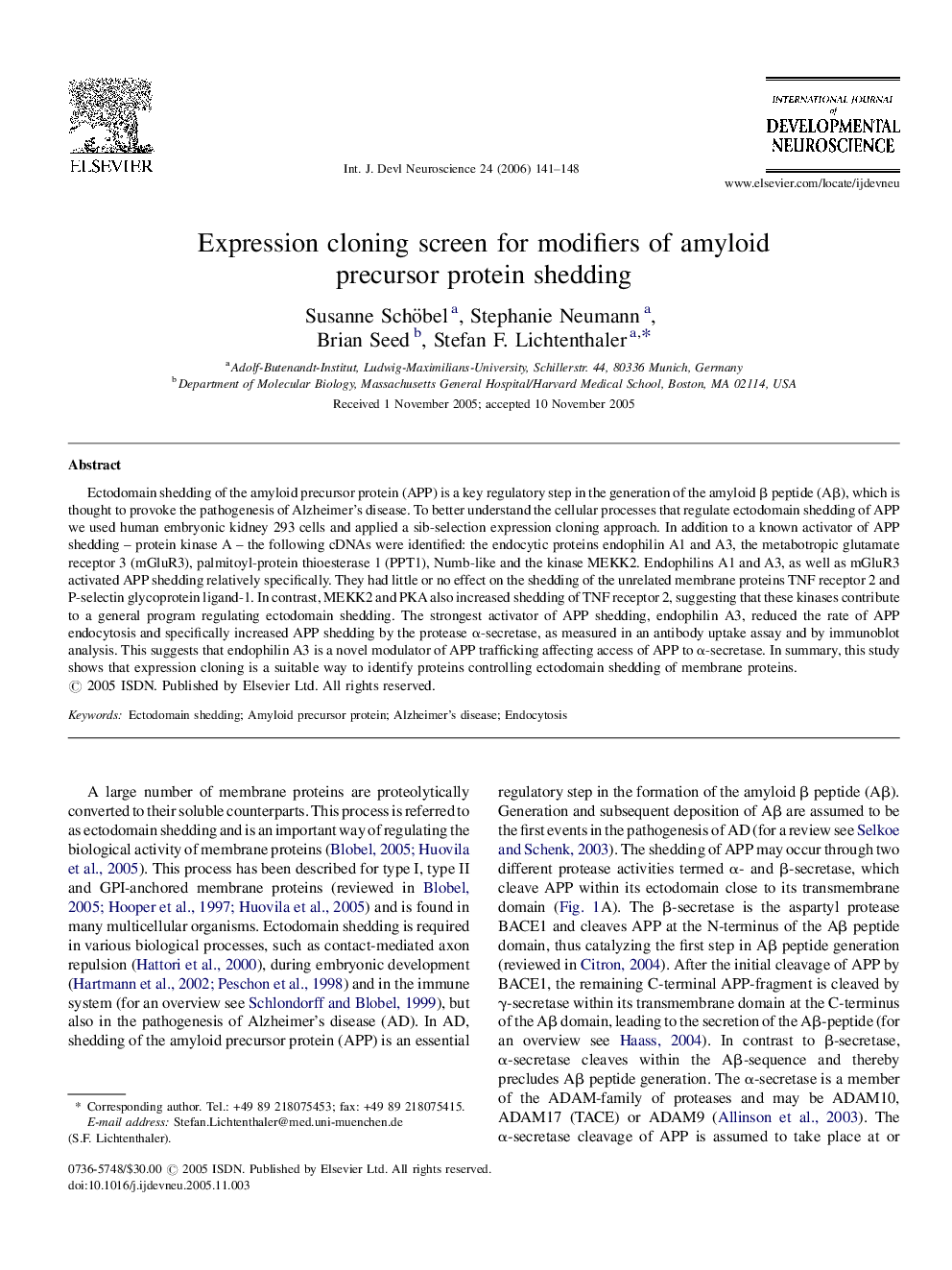| Article ID | Journal | Published Year | Pages | File Type |
|---|---|---|---|---|
| 2787170 | International Journal of Developmental Neuroscience | 2006 | 8 Pages |
Ectodomain shedding of the amyloid precursor protein (APP) is a key regulatory step in the generation of the amyloid β peptide (Aβ), which is thought to provoke the pathogenesis of Alzheimer's disease. To better understand the cellular processes that regulate ectodomain shedding of APP we used human embryonic kidney 293 cells and applied a sib-selection expression cloning approach. In addition to a known activator of APP shedding – protein kinase A – the following cDNAs were identified: the endocytic proteins endophilin A1 and A3, the metabotropic glutamate receptor 3 (mGluR3), palmitoyl-protein thioesterase 1 (PPT1), Numb-like and the kinase MEKK2. Endophilins A1 and A3, as well as mGluR3 activated APP shedding relatively specifically. They had little or no effect on the shedding of the unrelated membrane proteins TNF receptor 2 and P-selectin glycoprotein ligand-1. In contrast, MEKK2 and PKA also increased shedding of TNF receptor 2, suggesting that these kinases contribute to a general program regulating ectodomain shedding. The strongest activator of APP shedding, endophilin A3, reduced the rate of APP endocytosis and specifically increased APP shedding by the protease α-secretase, as measured in an antibody uptake assay and by immunoblot analysis. This suggests that endophilin A3 is a novel modulator of APP trafficking affecting access of APP to α-secretase. In summary, this study shows that expression cloning is a suitable way to identify proteins controlling ectodomain shedding of membrane proteins.
